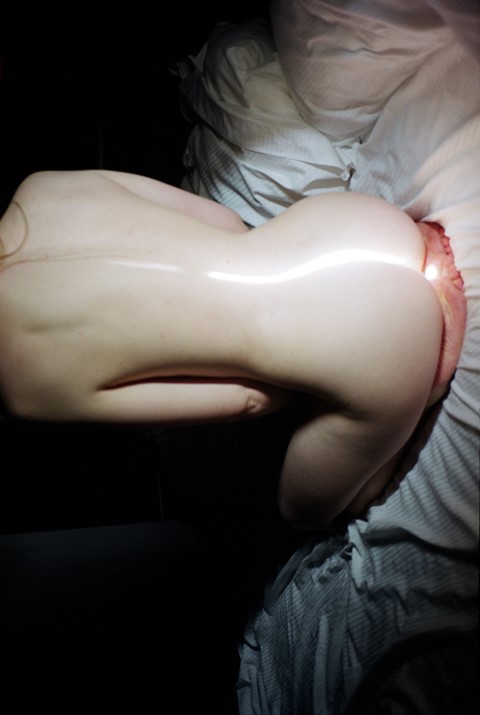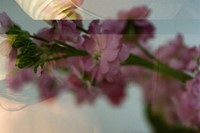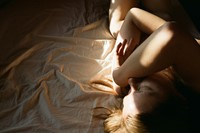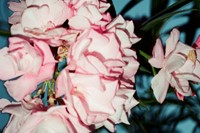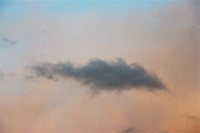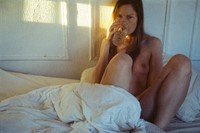Lina Scheynius’ latest publication, My Photo Books, represents a document of contemporary womanhood – here, the Swedish photographer opens up about her work and the varying ways it has been perceived
The only interesting thing about Lina Scheynius’ raw, personal photographs is that they were taken by a woman. An influential man working in photography, who will remain nameless, told her this when she was starting out. “Such a horrific comment,” she says, and one that she tried to forget. Because what really makes her photographs interesting is that, in fact, they could only be taken by a woman. One who, over the course of her career, has been cast as both gender traitor and feminist outrider depending on which way the portrayal of women’s stories was leaning at the time.
Rising star of Tumblr and Flickr in the mid 2000s, the Swedish photographer’s introspective style renders intimate and messy moments beautiful. She started self-publishing books after building interest online, and the licence it gave her to show whatever she wants feels more relevant than ever with digital platforms becoming restricted. Now, the 11 books that Scheynius made between 2008 and 2019 have been organised into a unique document of contemporary womanhood titled My Photo Books.
“Your work either fits the current political trend, or it doesn’t,” she tells AnOther over the phone from her London home. “To many, showing women naked was anti-feminist when I worked with ZEIT Magazine in 2012. Then people started talking about the female gaze and it was feminist again.” The way she produces her books has also evolved, graduating from InDesign to editing prints on her walls. Revisiting them with her publishing house, Jean Boîte Éditions, was a chance to address early mistakes. “Some I made big changes to, others I didn’t touch, but seeing them together for the first time was still strange. They were familiar, but so new.”
One constant theme is using herself and people around her to seize a moment. “I got my first camera when I was ten and was already taking photos of myself in the mirror,” says Scheynius. “Even in those early rolls of film there were pictures of my best friend on the toilet.” This unflinching approach creates an almost physical sense of proximity, engulfing the viewer in private rituals and mundane acts, like a haircut in the bath, brushing your teeth, adjusting your underwear, and having sex. Natural light illuminating life at its most vulnerable and poetic.
“I knew I was breaking taboos using nudity, but when I started sharing pictures online it wasn’t a problem.” One image, showing refracted light describe a vertical rainbow down the front of her cotton briefs, sums up this change (and featured on posters for the launch at Tenderbooks in Covent Garden). Explicit in a metaphorical rather than graphic sense, its divisive power is reflected in how often Instagram removes it. “I’m really struggling to reach people with the work I care about most,” she says, before half-jokingly comparing it to Gustave Courbet’s ultra-realistic painting of the female genitals, L’Origine du Monde, being censored under Facebook’s community rules on nudity in art.
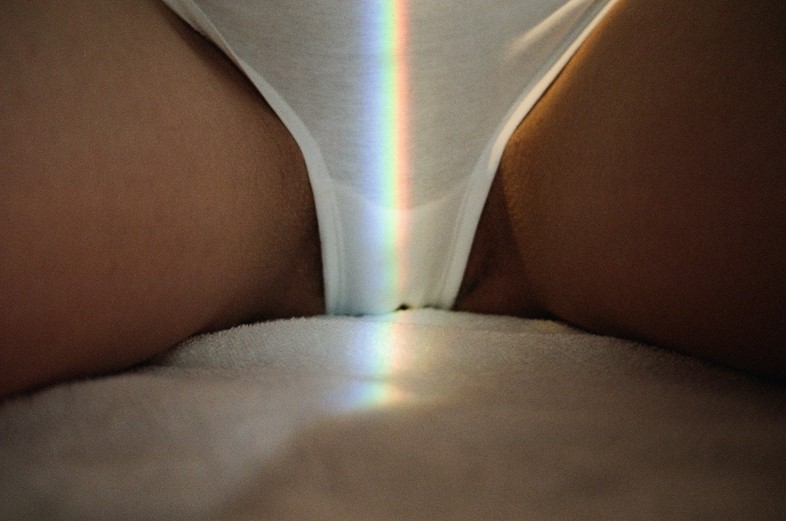
Candid rather than voyeuristic, her photos celebrate female sexuality, never objectify it; Scheynius and her subjects remain in control. “The people I’ve photographed have been generous,” says the ex-model. “Nobody ever told me to take anything down, even after relationships ended.” Although, these intimate images of friends and exes being seen by a larger audience soon made it harder to take her camera out. “I became cautious, and it confused things. Some people didn’t want me shooting them, others begged me to, and I found myself editing the pictures before I’d even taken them,” she says.
Looking back, the photographer explains that 10 was the hardest to make because she mixed passages from her private journal with pictures to tell the story of a relationship from beginning to end. “It was a powerful time, so reliving it was hard,” she says. “And my words just added another dimension of vulnerability.” Sharing herself in this way ramped up the emotional truth in her work, and a lot of people recognised themselves in what was written, but she has no plans to reread it anytime soon.
Scheynius works regularly with Jil Sander on quiet campaigns in which product feels secondary to storytelling. “I’m usually cautious about commercial projects but enjoy this because they let me do my thing.” This point matters because the importance of being free to do as she wants is what drives My Photo Books. The photographer only had to stick to an enforced schedule once, shooting her friend give birth for 11, but that is as pre-planned as Scheynius’ work gets. In that context, any reservations about commissioned jobs make perfect sense. “When I did more of them, I would wake up in the morning and be like, oh no, where’s my sun?!” she says. “Now if there’s no sun, I just don’t take a picture that day.”
My Photo Books by Lina Scheynius is out now.
